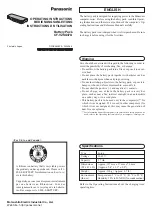
21
Life
A123 cells offer long cycle and calendar life, with minimal impedance growth over the life of the cells. The cycle life
graph in Figure 3 shows how the capacity of the cell decreases with respect to the number full Depth of Discharge
(DoD) cycles that it delivers. For example, at 25 °C, the cell can deliver over 5000 full DoD cycles before its capacity
decreases to 80% of its original beginning of life (BOL) capacity.
Figure 3 – AMP20 cells cycle life (1C charge / 1C discharge rates) *
Figure 4 shows how the cells lose capacity over time, sitting at 100% State of Charge (SOC) in various
temperatures. Within three months, the cells lose 3% of their initial capacity, but the aging slows, and over the
next one year they only lose another 1% at 25 °C. Temperature is a significant factor in calendar aging. For
example in two years, the capacity loss is 6% at 25 °C, 11% @ 35 °C and 22% at 45 °C.
Figure 4 – AMP20 cells capacity loss due to calendar aging *
* Data for other A123 cells can be found in Appendix A, starting on page 61.
Effect of temperature for 1C/-1C, 100% DOD cycling for AMP20 cells
Capacity Loss for 100% SOC storage AMP20 cells
















































